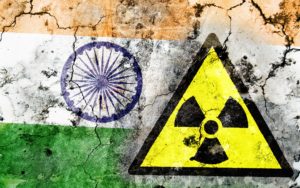By: Ahyousha Khan 28/5/2018
May 2018 will mark 20 years of “overt” nuclearization of South Asia wherein one is reminded of the nuclear tests at Chagai and Pokhran-II, which established nuclear deterrence between India and Pakistan. However, it pertinent to mention that the nuclearization of South Asia started with India’s so-called peaceful explosion in 1974, which forced Pakistan to seek nuclear weapons in the face of the existential threat from India and to contain the prospects of war with the nuclear neighbor. For Pakistan nuclearization was not a matter of prestige but a necessity, nonetheless several attempts were made to stop Pakistan even though India had conducted the PNE in 1974. Such efforts included the proposal for the establishment of nuclear weapon free zone in South Asia, which was denied by India.
Later, in 1998 when India conducted two sets of nuclear tests on 11 and 13 May, albeit opening of Comprehensive Test Ban Treaty for signing in 1996, Pakistan was forced to make a tough decision to detonate its nuclear device for validation and credibility of its nuclear deterrent vis-à-vis India. A fact worth mentioning is that the violation of non-proliferation norms by India left the world in shock, but no sanctions were implemented readily. However, the detonation of nuclear weapons by Pakistan was responded with an immediate condemning resolution from UNSC and sanctions from the US. Thus, the biases of the International community regarding Pakistan’s nuclear program was there since the beginning.
However, the rationale behind Pakistan’s decision is the fact that national security has no price and if the choice between international sanctions and survival would be given, survival would have opted. Overt nuclearization by both states brought nuclear deterrence into full play, which stabilized the region through fear of mutual catastrophic destruction. However, nuclear deterrence requires validation to maintain its credibility in the face of ever-growing threats. For Pakistan maintaining nuclear deterrence vis-à-vis, India is quite an arduous task because of its continuous attempts to break free from fear of catastrophic destruction. In case of South Asia, although deterrence has brought stability deterrence itself is in a fragile state; primarily because of two factors; Indian strategic ambitions, and the criminal silence of international community on massive Indian strategic build-up.
To promote its aggressive strategic ambitions, currently India is pursuing aggressive policies and doctrines like “Cold Start Doctrine (CSD) based on limited war proactive strategy” and “Joint Armed Forces Doctrine comprised of surgical strikes” which are making the future of strategic stability in region ambiguous by eliminating the deterrence stability on lower levels of conflict. India’s strategic arsenal composed of short-range ballistic missile (Prithvi), medium-range ballistic missile(Agni-2), intermediate range ballistic missiles(Agni IV), intercontinental ballistic missiles(Agni V), TNWs (Prahaar and Pragiti), sea-launched subsonic cruise missile, ALCM and submarine-launched ballistic missiles (K4 and K15) are also significant developments, which from time to time challenge the deterrence equilibrium in the region.
Moreover, the positive trajectory of Indo-US nexus and Capitol Hill’s rhetoric of “do more” for Pakistan is making South Asian political and strategic environment more and more complicated. Due to the possibility of long-term strategic ties with India to counter China, the US has turned the blind eye towards offensive force posture of India. Besides, India is receiving continuous support from the international community after Indo-US strategic deals. Recently it has been allowed into export cartels like MTCR, Wassenaar Arrangement, and Australia Group to strengthen its credential for NSG and to improve India’s military technological capabilities.
Consequently, maintaining strategic stability in an environment of the continuous arms race, ongoing conflicts and aggressive policies by political leaders is becoming very difficult for Pakistan to support. India’s offensive force posture, military modernization and arms acquisition, and development including the sophisticated missile technology can destabilize the region. However, Pakistan’s calculated response by developing advanced military technology like short-range ballistic missiles (Nasr), Multiple Independently Reentry Targetable Vehicle (Ababeel) and SLCM (Babur 3) has played a significant role in the preservation of minimum credible deterrence. Although Pakistan developed a policy to extend deterrence at all levels of the conflict spectrum, its national policy discourages arms race in the region. Hence, to maintain stability in the region and for its security, Pakistan is relying on deterrence stability.
Last but not the least, it is the need of the hour that both states should try to achieve strategic stability and resolve underlying disputes for utilization of their resources on the segments where their populations are suffering. As arms race and ignorance of deterrence will bring nothing but more weapons, conflicts, and aggressive rhetoric.

